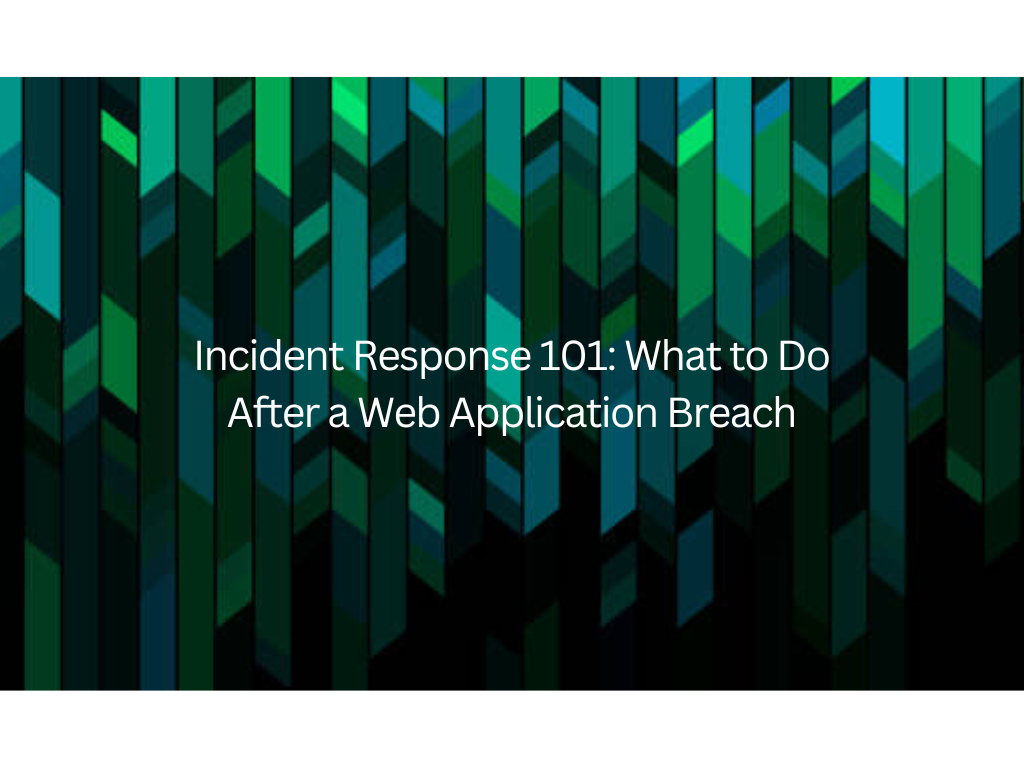A web application breach can happen to anyone — even the most secure organizations. Whether it’s due to a misconfigured firewall, an unpatched vulnerability, or stolen credentials, the impact of a breach can be devastating.
What truly defines your organization’s resilience is how you respond. A structured and timely incident response plan can minimize damage, preserve customer trust, and prevent future attacks.
In this guide, we’ll walk through a step-by-step approach to handling a web application breach effectively.
Step 1: Detect and Confirm the Breach
Before taking any drastic actions, confirm the breach.
- Monitor logs from your Web Application Firewall (WAF), servers, and SIEM tools.
- Look for unusual traffic patterns, unauthorized access attempts, or data exfiltration indicators.
- Validate the alerts with your security team or CERT-In empaneled partner before escalating.
💡 Tip: Continuous monitoring through a WAF like Haltdos helps detect and block threats in real-time.
Step 2: Contain the Incident
Once confirmed, act fast to contain the damage.
- Isolate affected systems and applications.
- Disable compromised accounts or API keys.
- Temporarily block suspicious IPs or regions via your firewall.
- Switch to backup servers if necessary to maintain uptime.
The goal here is not yet to fix — but to stop the attacker’s movement and limit data exposure.
Step 3: Eradicate the Root Cause
After containment, it’s time to remove the attacker’s foothold.
- Identify and patch the exploited vulnerabilities (e.g., SQL Injection, XSS, outdated plugins).
- Revoke or rotate all compromised credentials.
- Clean malicious code or backdoors left in your web app or database.
- Conduct a full malware and integrity scan on your systems.
👉 Use web application security testing tools and vulnerability scanners to ensure your environment is clean.
Step 4: Recover Securely
Now that the threat is neutralized, carefully restore systems to normal operations:
- Restore from known clean backups.
- Re-enable affected applications only after validation.
- Monitor for recurring anomalies post-recovery.
- Notify users if their data was impacted, ensuring compliance with privacy laws (like DPDP Act 2023 or GDPR).
Transparency builds trust — customers appreciate honesty and quick remediation efforts.
Step 5: Conduct a Post-Incident Analysis
Once your web app is back online, take time to learn from the incident.
- Document the breach timeline, actions taken, and lessons learned.
- Assess what worked well and what failed in your incident response process.
- Update your Incident Response Plan (IRP) based on findings.
- Provide additional training to your development and IT teams.
🔁 Remember: Every incident is an opportunity to strengthen your defenses.
Step 6: Implement Preventive Measures
Don’t just recover — reinforce your defenses.
- Deploy or upgrade a Web Application Firewall (WAF) to filter malicious traffic.
- Conduct regular security audits and penetration testing.
- Enable Multi-Factor Authentication (MFA) and role-based access control.
- Automate patch management and monitor logs continuously.
🚀 Haltdos WAF helps automate incident detection, block malicious patterns, and provide real-time protection against OWASP Top 10 threats.
A web application breach is not the end — it’s a wake-up call to strengthen your digital defenses. The key lies in swift detection, clear communication, and proactive recovery.
Having a trusted security partner like Haltdos can help you:
- Detect threats in real-time,
- Minimize breach impact, and
- Ensure your web applications stay resilient against evolving cyber threats.
Protect your business-critical web applications with AI-powered WAF and DDoS protection.
👉 Explore Haltdos Security Solutions



